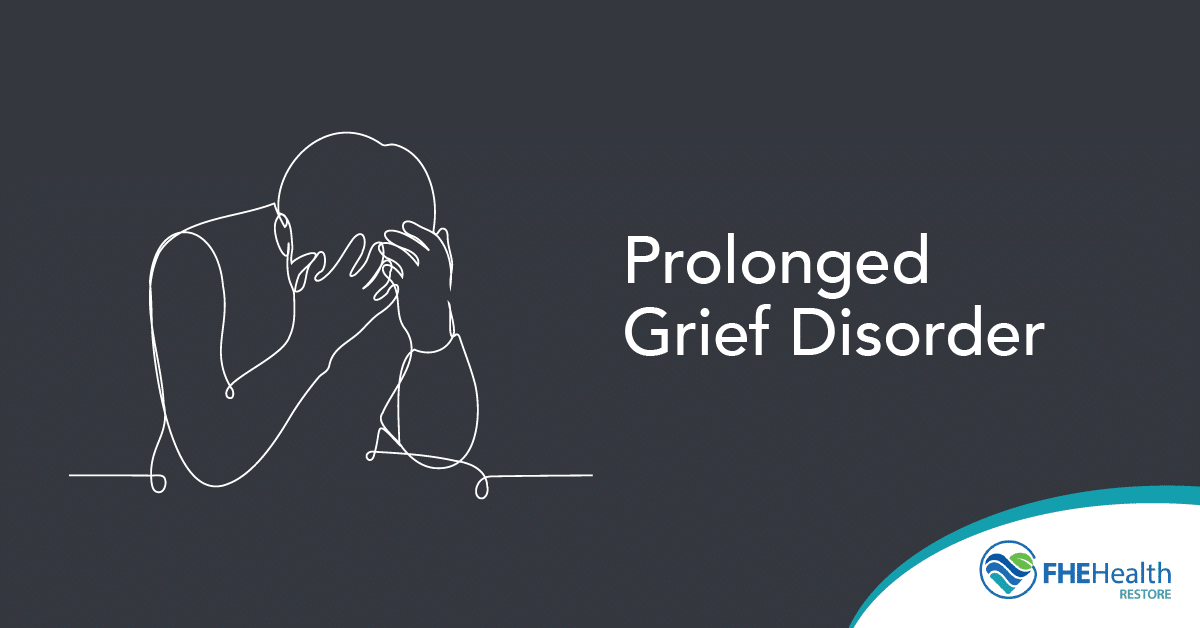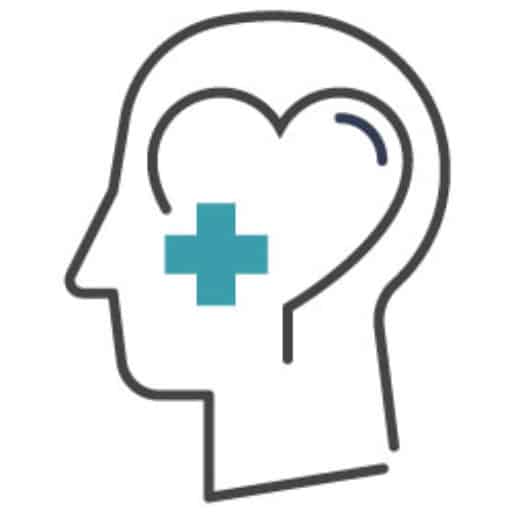While death is a natural and inevitable part of life, it doesn’t make it any easier when we lose someone close to us. Humans are social creatures; we derive meaning from interpersonal bonding, and our relationships are part of who we are. Grief is a normal response to losing a loved one. Over time, most people process their grief and are able to accept the loss. Individuals living with prolonged grief disorder experience a more intense and longer-lasting form of grief.
Understanding the grieving process can help you and those around you on your healing journey. In this article, we’ll cover prolonged grief syndrome (PGS), how it differs from typical grief and how it’s treated.
Understanding Grief and Bereavement
The American Psychological Association defines grief as “the anguish experienced after significant loss, usually the death of a beloved person.” However, grief isn’t always caused by the loss of a loved one. It’s possible to grieve other life changes too, such as divorce or the loss of a job. In some cases, people who are caring for a terminally ill person may find the grieving process starts while their loved one is still alive.
When experiencing these emotions, it can be helpful to be aware of the normal stages of grief. People living with prolonged grief syndrome (also known as prolonged grief disorder) experience more incapacitating and longer-lasting feelings. While simply knowing about these emotions won’t help alleviate them, it can serve as a reference point for you to understand the process.
What Is Prolonged Grief Disorder?
Prolonged grief disorder is characterized by intense and incapacitating feelings of bereavement. Complicated, traumatic and chronic are all terms used to describe the syndrome. Significant changes in a person’s level of functioning are hallmarks of chronic grieving. While sadness is a natural and acceptable reaction to traumatic events or losses, prolonged mourning makes it difficult to accept the loss of a loved one and move on in a healthy way.
Prolonged grief disorder is diagnosed when symptoms last for more than 12 months in adults and at least 6 months in children after a loved one passes away. Symptoms of prolonged grief disorder include:
- Identity disruption (feeling as if a part of yourself has died)
- Strong disbelief about the death
- Persistently avoiding reminders of the person’s death
- Emotional numbness
- Anger, bitterness or other strong emotional reactions to the death
- Withdrawing from social activities
- Feeling detached from others
- Feeling that life is meaningless
Grief manifests itself differently in children and adults. While children may display avoidance and withdrawal, adults may turn to alcohol or drugs to drown out unbearable feelings and thoughts. Both of these reactions are counterproductive to the healing process, so it’s important to seek help if you or someone close to you is struggling with grief. Prolonged grief syndrome affects around 7%-10% of adults and 5%-10% of children.
Introduction of Prolonged Grief Syndrome to the DSM-V
Grief can be intense, and medical professionals know how difficult loss can be. For this reason, differentiating normal grief from complicated grief isn’t clear-cut.
The addition of grief disorder to the DSM-V in 2022 is just one of many changes to the DSM’s treatment of bereavement, and it’s one that’s controversial. Some critics of the addition of grief reaction to the DSM consider it to be “pathologizing grief” and risking turning a normal reaction into something to be medicated. However, others disagree.
The new diagnosis is intended to apply to a small fraction of the population that’s crippled by grief. These people display signs of being unable to return to normal life activities and remain overwhelmed a year after a death.
The decision brings an end to more than a decade of debate, with some researchers advocating for the medical treatment of severe bereavement. Although grief is natural, some people experience intense sorrow that leads to isolation.
Difference Between PGS and Normal Grief
The key difference between typical grief and prolonged grief syndrome is the duration of the symptoms. Grief can last anywhere from a few months to a few years, but people typically get back to normal activities within 1 year of the loss. In prolonged grief syndrome, feelings of grief and overwhelming loss continue to be debilitating even after 1 year.
While normal grief is also intense, the feelings tend to subside somewhat after the first 6 months. During a normal grieving process, special dates such as birthdays or anniversaries may trigger renewed feelings of grief, as might certain things that remind the mourner of their loved one. However, the feeling of grief doesn’t remain all-consuming, and the mourner is able to engage in their usual activities.
People suffering from PGS may ruminate and have persistent, intrusive thoughts about their lost loved one. Researchers have found a link between prolonged grief symptoms and future episodes of depression, which can lead to further withdrawal from social activities, hobbies and even work. When this is prolonged and becomes unmanageable, it’s time to seek help.
How to Spot PGS in Others
It’s not always easy to tell if someone is struggling with grief. People differ in their tendencies to self-disclose. While certain people may be forthright about their feelings and their inability to cope, others may try to conceal their pain and put on a brave face.
If, after 1 year, you notice someone close to you is more withdrawn than usual or appears to have lost interest in activities they used to enjoy, it may be a sign that they’re still feeling intense, debilitating grief. Signs can include:
- Loss of job due to inability to cope
- Alcohol or substance abuse
- Extreme social withdrawal
- Severe depression
- Inability to reconcile the loss
When dealing with grief, speaking with a health care provider is a crucial first step. They’ll conduct an assessment by inquiring about your symptoms and how you’re dealing with them. This allows them to better understand the problems at hand and rule out other diagnoses, such as post-traumatic stress disorder and depressive illnesses.
Treatment for Prolonged Grief Syndrome
Getting support from a mental health expert can help you get a more accurate diagnosis and manage your symptoms. A therapist can assist you in processing your loss in a sympathetic, safe and nonjudgmental setting and discuss ways to improve your emotional well-being and functioning.
Cognitive behavioral therapy (CBT) can be a good long-term treatment option. When combined with other approaches, such as exposure therapy, it can help reduce symptoms of grief and despair in grieving adults, arming them with the tools they need to accept their loss and build a future for themselves.
Another common approach to treating prolonged grief syndrome is psychodynamic psychotherapy. This may include practices such as:
- Discussing the concept and reality of death
- Recalling positive memories of the deceased person
- Addressing unresolved feelings
- Practicing emotional regulation
- Examining interpersonal attachments
Healing from grief can be a long journey, and it’s not always a linear one. Finding a therapist who’s willing to help with the ups and downs of grief is essential.
Don’t Wait to Seek Help
Grief after losing a loved one is natural. Everyone experiences grief differently, and it can be difficult to understand your emotions, let alone explain them to others. You might feel you’ll never be able to get over the loss. However, while you may miss the person the rest of your life, grief can be something we learn to integrate into our lives and walk with.
If you or someone you know is experiencing prolonged grief syndrome or has developed a substance use problem as a result of grief, reach out for help. Restore Mental Health is equipped to support you. Call us now to learn more about our therapies for grief and depression.



